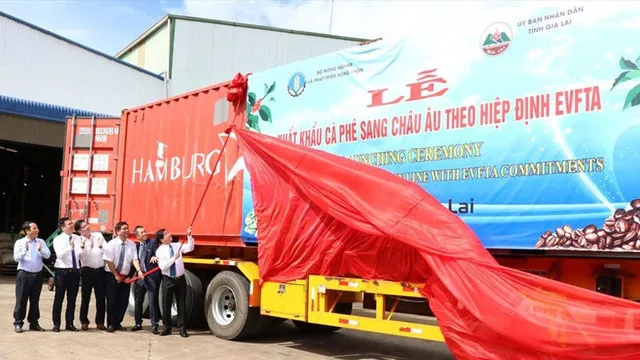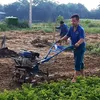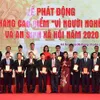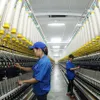Strong breakthroughs from EVFTA

Accordingly, a large number of shipments of agricultural products have been exported to the EU market, received customs clearance and enjoyed preferential tax rates. Specifically, fishery exports to EU have witnessed a 10% increase in the number of orders as compared to July, with especially great growth in shrimp.
Previously, in the first and second quarter of this year, shrimp exports to the EU decreased 4% and 10% respectively, compared to the same period last year. Since July, exports have recovered by 2% and saw a sharp increase of 16% in August. This shows that the import tax on frozen shrimps to the EU, since being reduced to 0% under EVFTA, has had a positive impact on exports to this market. In addition, Vietnamese rice exported to the EU market also achieved positive results not only in quantity but also in price, with the increase of US$80-200 per tonne over the period before the EVFTA took effect. Vietnam has also promoted the export of many other commodities such as coffee and fruit to the EU at high prices.
It can be seen that EVFTA is a great opportunity for the country’s agricultural sector. In reality, many industries have taken initial advantage of tax preferences to increase their competitiveness and help Vietnam's agricultural producers expand their market share in the EU. In the context of the Covid-19 epidemic remaining complicated and strongly affecting global trade, the achievements of Vietnam's agricultural export industry dealing with the most difficult market in the world are proof of the efforts made by relevant sides, from production and processing to the export phase. This not only benefits agricultural products in the EU, but is also a valuable “credit” for Vietnam's agricultural sector to "score" with many other high-quality markets around the world.
However, the requirements from the EU market are expected to be even stricter when the tariff incentives are implemented. Therefore, in order to make exports to this market continue to increase in the coming months, all sectors should have long-term strategies. It is essential to maintain and develop a closed chain production, from raw material to processing, traceability and food safety for commodities with advantages such as fruits, vegetables, fish, coffee and rice. In addition, businesses need to carefully prepare dossiers, procedures and commercial skills to immediately enjoy tax rates of 0% under EVFTA. In particular, to gain the target of increasing the export turnover of fish to the EU market to around US$2.5 billion by 2025, localities should be more proactive in implementing the recommendations of the European Commission (EC) to quickly remove any “yellow cards” for fishery products.
In addition, the relevant agencies should continue to review administrative procedures on import and export on the basis of facilitation and effective support for businesses as well as communicate commitments on the reduction and elimination of import tax on agricultural products and market access in order to improve the knowledge of farmers and enterprises.





